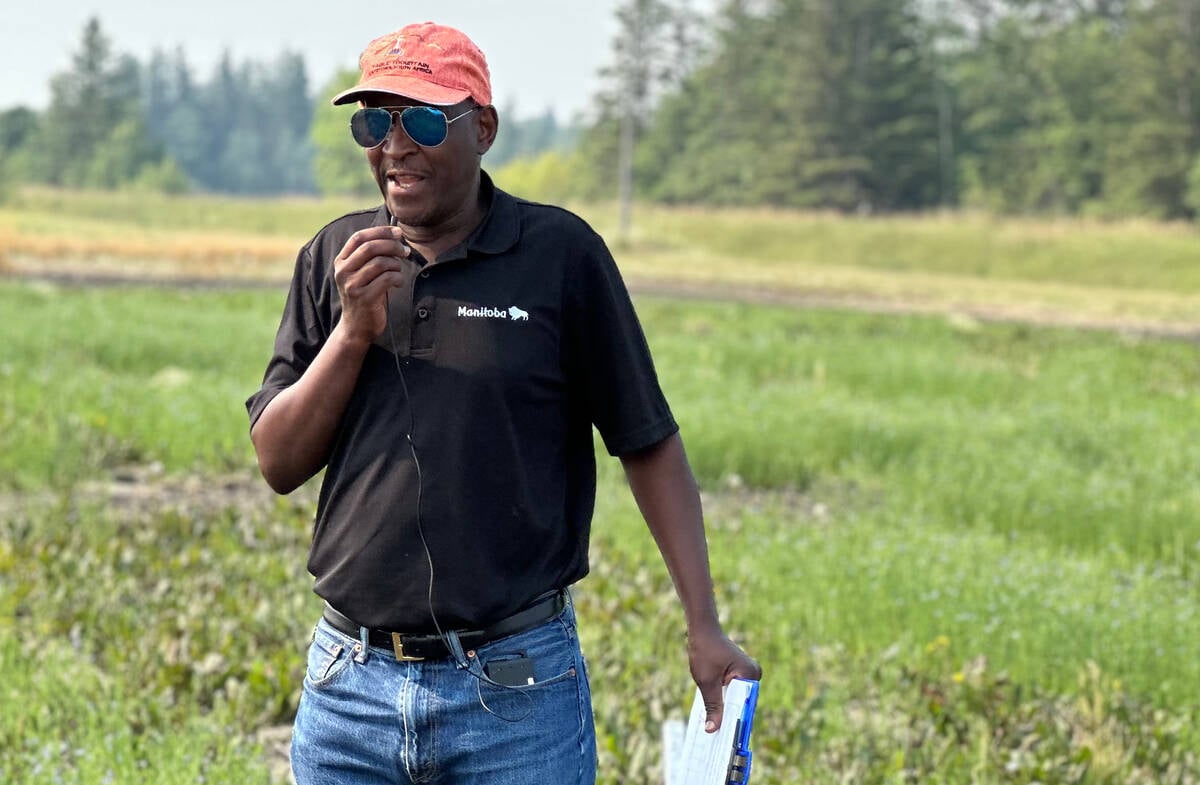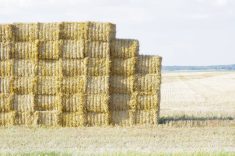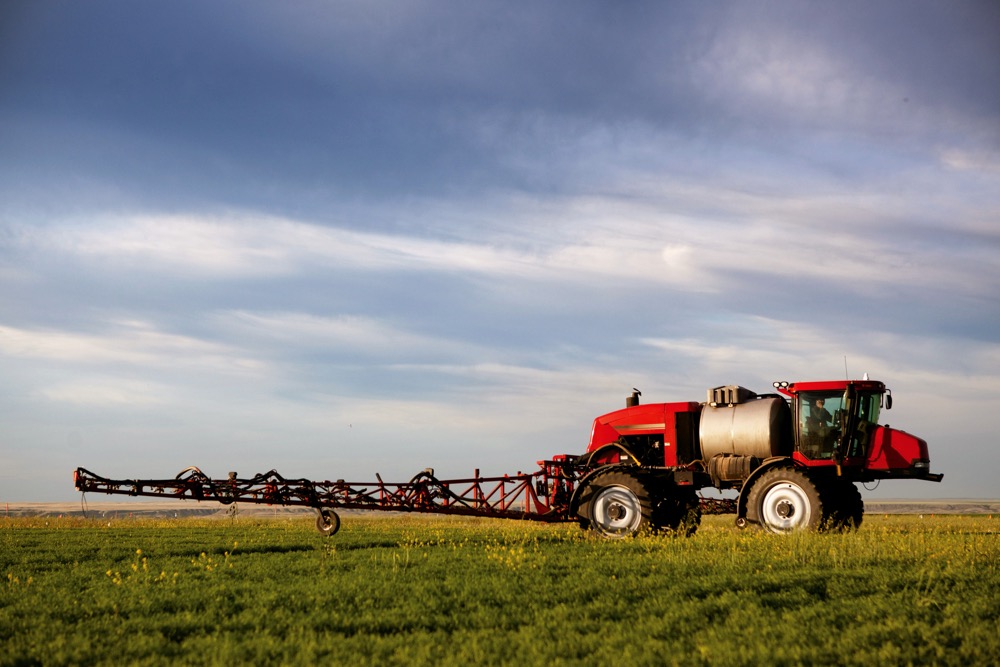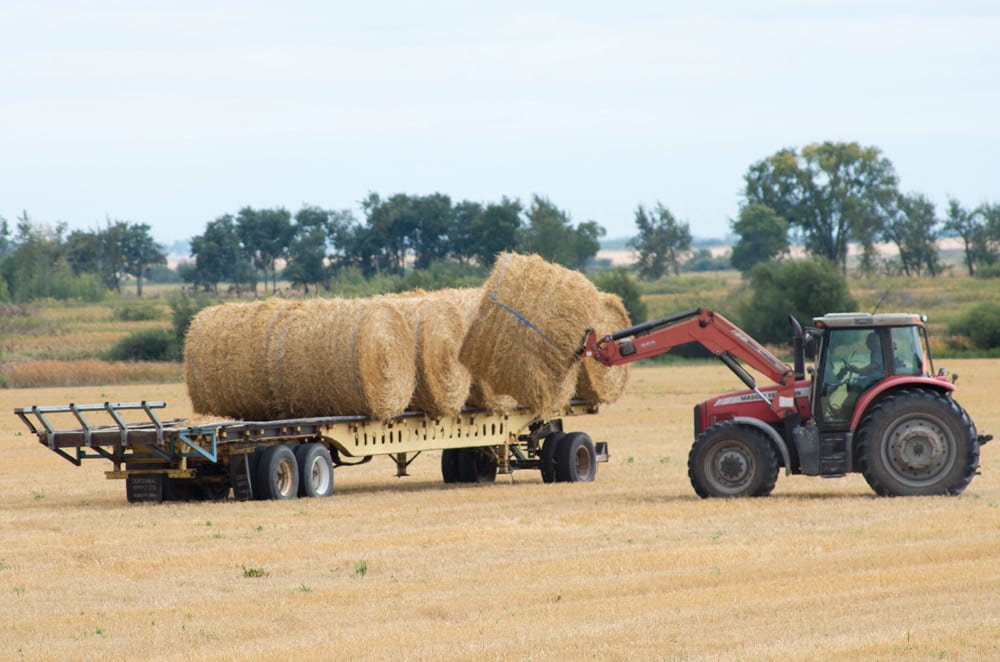Throughout his travels as a consultant, Phil Needham has noticed producers continue to struggle with residue management to the detriment of crop emergence, plant counts and yield.
Many residue management woes come down to two pieces of equipment: harrows and mismatched choppers on combines, said Needham, who operates an agronomy services company in Kentucky.
“I find there’s still a lot of growers out there that are buying the standard, basic choppers at the back of the combine, which is a steel, vertical-finned tailboard,” Needham said during a presentation at Farming Smarter’s Global Crop Production Conference earlier this month.
Read Also

How much nitrogen can farmers really cut?
Manitoba fertilizer trials look for nitrification inhibitor sweet spot, to lower greenhouse gas emissions and cost without hurting yield.
A general rule of thumb is that the residue should be spread across the working width of the header, and that’s not always the case with standard steel tailboards, he said.
“In most environments, 30 to 35 feet is about as wide as the steel tailboards spread most of the time,” said Needham. “If you’re going to put a 40- or 45-foot head on the front of the combine with a steel tailboard like that, you’re going to wind up with residue streaks which are really going to give you challenges getting crops in the ground, established and out of the ground uniformly.”
There are better alternatives to standard tailboards, he said, citing one brand as an example.
“John Deere has the Advanced PowerCast tailboard with an oscillating central driver in the middle. It does a much better job spreading chaff and residue evenly across 35 to 40 feet in many conditions. If you have a 40-foot head, it would be a good tailboard/spreader combination to put on the back of a combine.”
However, Needham doubts that many producers think about residue spreading when buying a combine.
“They’re buying the heated cabs with the leather seats and the refrigerators but they aren’t spending the 10 grand required to buy (a better residue system),” he said. “So spend your money on the better choppers, park the harrow or don’t buy the harrows, or sell the harrows to buy the choppers. That’s my suggestion.”
Harrowing is a common practice in Western Canada. Needham said he generally dislikes the use of harrows because they struggle to spread residue and can create clumps in the field, especially when used with precision hoe drills.
“Harrows in some examples actually hurt you more than they help, especially if you’re running at an angle to the direction of the seeder pass,” he said. “They knock the residue down in relative direction to the seeder pass and they often detach the residue from the soil surface.
“The net result of those two problems is, with a lot of these precision hoe drills, the material accumulates on the opener points and then dumps off, so what you tend to see are these clumps created after the harrows.”
The evidence is in the field, he said.
“Many, many, many times I see fields that are harrowed (and) the harrows really aren’t spreading residue, even in dry conditions. I’ve seen many fields that had poor residue spread at harvest time and got differences in emergence and differences in stand counts.”
And the problems don’t stop there, Needham added.
“When you have massive amounts of residue on the soil surface, the soil is cooler so the crop grows up slower. You’ve got less tillers so you’ve got less plants to start with because of the residue volumes.
“Then you’ve got less growth so when you do head counts close to harvest time, you’ve got significantly less heads but have these high-residue bands compared to areas with little to no residue.”
Needham also addressed one way to avoid poor separation of seed and fertilizer rows in moist conditions. He cautioned against deep side-banding, especially when using a twin knife opener system on a precision hoe drill, as this can “create a lot of tillage.”
“Depending on the soil type and the opener design, with a lot of these precision hoe drills the soil sticks to the opener point, which makes (the row) wider, especially with a twin knife system,” he said.
“The second knife is right behind and tends to explode the seed trench out. … You end up not getting very good separation between seed and fertilizer and run into additional challenges of poor field finish.”
Needham said he prefers a mid-row band with minimal soil accumulation.
“It doesn’t bulldoze a lot of soil when you’re in slightly moister conditions but you’re safely positioning fertilizer such as N and perhaps P in the mid-row bands without a lot of soil disturbance.”
Needham recommended disc seeders for their performance in certain conditions.
“There are a lot of drier environments where a disc seeder will, by far, get you better distribution of seeds, a good field finish, and do a better job of getting seeds in the ground much more consistently than some precision hoe drills, which generally don’t get a lot of seeds in the ground because they move a lot of soil.”
He also urged producers to consider a fungicide when adding N.
“Generally speaking, when you advance nitrogen rates upwards, the disease pressure increases somewhat proportionately because you’ve got that denser microclimate,” said Needham.
“The justification for a fungicide becomes much greater because the disease pressure is greater and you have to suppress that disease with a fungicide. You’ve got an increased yield potential that has to be protected.”
















